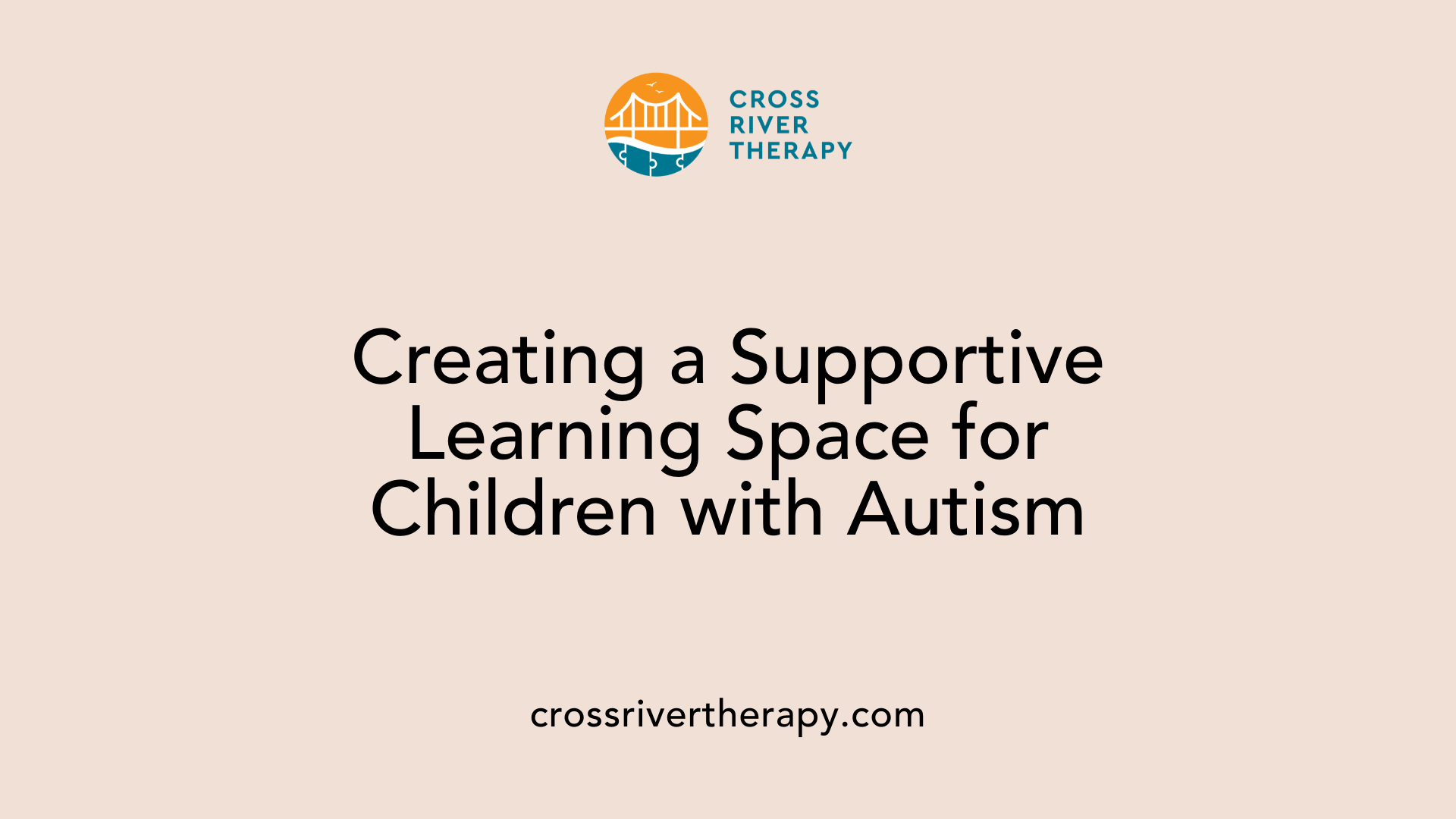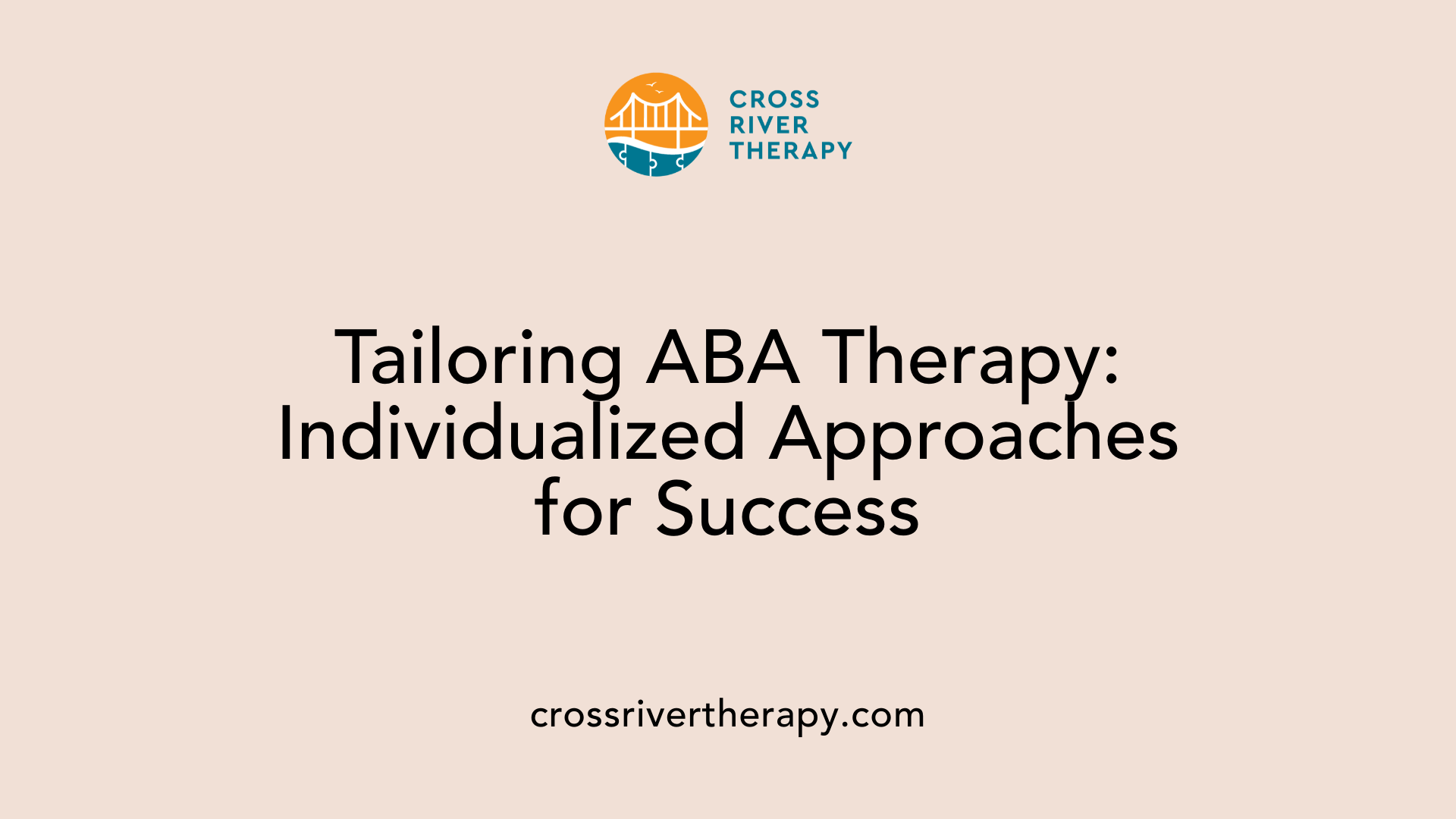Creating a Positive Learning Environment in ABA Therapy Sessions
Fostering a Constructive Atmosphere in ABA Therapy
Introduction to Positive Learning Environments in ABA
Creating a positive learning environment in Applied Behavior Analysis (ABA) therapy is vital for children with autism, promoting both engagement and progress in their therapeutic journey. By understanding the unique needs of each child and implementing strategic teaching methods, therapists can ensure a nurturing atmosphere that enhances learning outcomes. This article explores various strategies and insights to help make ABA therapy sessions more productive and enjoyable.
Establishing an Optimal Physical Environment

Setting up the physical space
Creating a positive learning environment in ABA therapy is essential for children with autism. A structured and predictable physical space plays a vital role in this process. When setting up the space, consider the layout to foster easy movement and accessibility. Keeping unused materials out of sight can help prevent overwhelm and overstimulation, allowing children to focus better on their learning.
Reducing distractions
Minimizing distractions is a critical factor in maintaining engagement during therapy sessions. Limit wall art and vibrant decorations to avoid sensory overload. Instead, use calming colors and designs that are visually appealing yet neutral. Clearly defined learning areas, such as a reading nook or a play zone, help create a focused environment where children can thrive.
Creating defined areas
Establishing specific zones aids in reducing distractions and supports learning. For instance, a quiet reading area can encourage independent reading, while a sensory bin area can promote hands-on exploration. These designated spaces not only help children understand where to focus their attention but also promote autonomy by allowing them to choose where to engage actively.
By paying close attention to the physical environment, caregivers and therapists can create a supportive atmosphere that enhances learning outcomes for children with autism, catering to their unique needs.
Enhancing Engagement with Effective Teaching Methods

What strategies can enhance engagement and learning outcomes in ABA therapy through effective teaching methods?
To enhance engagement and learning outcomes in ABA therapy, it's vital to implement a variety of individualized teaching methods. Two prominent approaches are Discrete Trial Training (DTT) and Natural Environment Teaching (NET).
Discrete Trial Training (DTT): This method provides focused instruction through structured tasks that allow for immediate reinforcement. It is crucial for skill acquisition as children receive direct feedback on their performance.
Natural Environment Teaching (NET): In contrast, NET promotes learning in everyday contexts, such as at home or in the community. This strategy helps in fostering generalization of skills and encourages social interaction, both essential for children with autism.
In addition to these methods, incorporating visual supports can significantly enhance focus. Minimizing distractions like excessive wall art and ensuring that unused materials are out of sight can help children concentrate better on learning tasks.
Caregiver involvement is another vital component. Actively engaging parents in the therapeutic process leads to consistent reinforcement of positive behaviors at home. Using approaches like the First/Then strategy allows children to see clear sequences of tasks, which can increase their motivation and engagement.
Finally, tailoring strategies to each student’s unique strengths and preferences is fundamental. Incorporating various activities such as matching games, sensory bins, and role-playing can create dynamic, engaging learning environments that prevent monotony and foster positive behavioral development.
Natural Environment Teaching in ABA

Why is Natural Environment Teaching (NET) important in ABA therapy, and how is it practiced?
Natural Environment Teaching (NET) holds significant value in ABA therapy as it emphasizes learning in real-world contexts. This approach helps children with autism to generalize and apply skills they learn in therapy to their everyday lives. By focusing on child-led learning, NET nurtures a child's intrinsic motivation, increasing their engagement through activities aligned with their interests and daily routines.
NET incorporates various techniques like Incidental Teaching, Pivotal Response Training, and the Natural Language Paradigm. All of these methods aim to integrate meaningful learning experiences into play and daily interactions. For instance, during playtime, therapists might prompt a child to count blocks or describe colors without the pressures of structured drills. This approach fosters spontaneous communication and social interaction, essential for building relationships and enhancing overall communication skills.
What are the benefits of implementing NET strategies?
The benefits of NET are multifaceted:
- Increased Generalization of Skills: Skills learned in therapy can be easily applied to different settings, reducing prompt dependency.
- Authentic Learning Experiences: Engaging in natural environments creates a more relatable learning atmosphere for children.
- Improved Engagement: Child-led activities keep learners interested and motivated.
- Reduction of Problem Behaviors: By teaching replacement skills in context, NET helps minimize behavioral challenges through meaningful engagement.
What specific strategies are employed in NET?
Strategies within NET include a variety of engaging and practical techniques designed to enhance learning:
| Strategy Type | Description | Purpose |
|---|---|---|
| Incidental Learning | Learning occurs from naturally occurring events in everyday life. | Encourages spontaneous learning. |
| Peer-Mediated Play | Involves peers to foster social skills through shared activities. | Enhances social interactions. |
| Activity Scaffolding | Providing support during specific tasks to guide learning progression. | Builds skills step by step. |
| Functional Routines | Embedding learning into routine tasks like cooking or shopping. | Promotes real-world skill application. |
Incorporating NET activities into daily routines can significantly enhance learning for children with Autism Spectrum Disorder (ASD). Activities such as sorting toys, cooking together, or counting at the store allow children to practice and generalize skills meaningfully. By embracing this tailored teaching strategy, both educators and parents can create dynamic learning environments that are engaging and effective.
The Role of Positive Therapist-Child Interactions

How do positive interactions between therapists and children impact the learning environment in ABA therapy?
Positive interactions between therapists and children significantly enhance the learning environment in ABA therapy. They foster trust and comfort, both of which are crucial for effective engagement. When children feel connected to their therapists, they are more likely to participate willingly, thereby increasing the effectiveness of therapy sessions.
Moreover, therapists employ positive reinforcement strategies, which help children associate learning with pleasant experiences. This association promotes a love for exploration and encourages skill acquisition. By celebrating achievements, no matter how small, therapists can boost children’s confidence and foster motivation.
What are the benefits of using child-led approaches?
Child-led approaches are pivotal in creating a stimulating learning environment. By focusing on a child’s interests, therapy becomes more engaging and meaningful. For example, integrating playful activities relevant to a child’s preferences allows for more natural learning, where concepts can be absorbed effortlessly.
Additionally, these interactions empower children, granting them some control over their learning pace and topics. This autonomy builds independence and helps children utilize their behavioral skills effectively.
Why is building trust important in therapist-child relationships?
Building trust is at the heart of effective ABA therapy. A strong therapeutic relationship encourages children to express themselves freely, share their thoughts, and engage actively in their learning processes. Such an environment nurtures essential social skills and contributes to positive outcomes, showing that interaction between therapists and children is not just beneficial but fundamental to fostering effective learning experiences.
Implementing Personalized Approaches in ABA

How can personalized approaches be implemented in ABA therapy to meet the individual needs of children?
Personalized approaches in Applied Behavior Analysis (ABA) therapy focus on tailoring interventions to fit the unique strengths and needs of each child. This can start with comprehensive assessments, which utilize observations, caregiver interviews, and standardized tools. These assessments help identify each child’s specific challenges and preferences.
Creating customized treatment plans is essential. These plans often incorporate SMART criteria—Specific, Measurable, Achievable, Relevant, and Time-bound goals. By collaborating with families to set these goals, therapists can ensure that learning is motivational and clearly defined.
Continuous data-driven monitoring plays a pivotal role in ABA therapy. It allows therapists to track progress and make necessary adjustments to interventions. This responsive approach ensures that methods align with the child's evolving needs and preferred learning styles.
Family involvement cannot be overstated. Parents and caregivers are encouraged to participate actively in the therapy process. They can help generalize skills across home and community environments, reinforcing learned behaviors in real-life situations.
Incorporating cultural sensitivity and individual-specific reinforcers also enhances engagement. By understanding the cultural background and using motivators tailored to the child, therapists can create more meaningful and effective therapeutic experiences.
| Element | Description | Implications |
|---|---|---|
| Comprehensive Assessments | Observations and interviews to gather child-specific data. | Identifies strengths, challenges, and preferences. |
| Customized Treatment Plans | Uses SMART criteria for goal setting. | Enhances motivation and clarity in objectives. |
| Continuous Monitoring | Data tracking to inform therapy adjustments. | Ensures methods fit evolving needs. |
| Family Involvement | Encouragement of caregiver participation. | Supports skill generalization in real-life contexts. |
| Cultural Sensitivity & Reinforcers | Tailoring motivational strategies to individual backgrounds. | Increases engagement and effectiveness of therapy. |
Incorporating Play and Social Interaction
Role-playing Activities
Role-playing and pretend play are critical for developing social skills in children with autism. These activities allow learners to rehearse real-world scenarios in a safe context. This not only enhances their understanding of social dynamics but also equips them to better handle everyday interactions.
Language-rich Environments
Creating a language-rich environment is vital during therapy sessions. Engaging children in song and storytelling can boost their echoic and vocal skills while providing exposure to various grammatical structures. These interactive experiences foster positive connections with therapists and promote language development, enhancing communication and social interaction.
Sensory Play
Sensory bins offer a multi-sensory learning experience essential for children on the spectrum. They help develop tolerance for new sensory experiences in a safe setting. This type of play aids in sensory integration and prepares children for real-life situations. The use of sensory activities aligns with Natural Environment Teaching (NET) methods, making learning meaningful and connected to their daily lives.
| Activity Type | Benefits | Implementation Example |
|---|---|---|
| Role-playing | Enhances social skills & understanding | Reenacting a visit to a store |
| Language-rich | Boosts communication & connection | Reading stories & singing during sessions |
| Sensory play | Aids sensory integration & tolerance | Exploring textures in a sensory bin |
Incorporating these playful elements into ABA therapy can create a supportive learning environment that fosters independence and effective interactions.
The Importance of Routine and Structure
Establishing predictability
Creating a routine in the learning environment is crucial for children with autism, as it fosters a sense of safety and predictability. Predictable schedules help children anticipate transitions and understand what to expect next, significantly reducing anxiety during school activities.
Managing transitions
Children thrive on structured transitions. By breaking activities into manageable steps and using visual schedules, students can move smoothly from one task to another. This method not only clarifies expectations but also prepares them mentally for the next phase, easing potential distress.
Reducing anxiety
Minimizing distractions, such as clutter and excessive wall art, helps children focus better. A structured environment filled with clearly defined learning areas reduces societal stimuli that can overwhelm learners. Implementing strategies like Natural Environment Teaching (NET) promotes learning through familiar routines, further alleviating anxiety in children with autism.
Customizing the Learning Space for Success
Minimizing distractions
Creating an environment that supports children with autism involves minimizing wall art and other visual distractions. An uncluttered space allows children to focus better and enhances their ability to retain information. Reducing overstimulation is essential for effective learning.
Creating learning zones
Establishing clearly defined learning areas, such as a reading nook or a play area, further aids in optimizing the learning experience. Designating specific zones helps children acclimatize to transitions and builds a structured routine.
Organizing materials
Keeping unused materials out of sight can significantly reduce feelings of overwhelm. A well-organized environment ensures that children can focus on the task at hand, promoting a sense of calm and readiness to learn. This structured approach aligns with the core principles of Applied Behavior Analysis (ABA) therapy.
Generalization and Skill Transfer
Applying Skills in Everyday Situations
Generalization is critical for children with autism, especially when they learn new skills through Applied Behavior Analysis (ABA) therapy. It means taking those skills out of the therapy room and applying them in real-world scenarios. When children practice skills in natural environments, such as at home or in the community, they learn to recognize when to use those skills, enhancing their independence.
Monitor Progress
Monitoring a child’s progress in applying learned skills in everyday situations is essential. Regular assessments during and after therapy can help caregivers understand how well a child is adjusting and where further support might be needed. This feedback loop allows for adjustments in teaching methods, ensuring that children continue to thrive.
Authentic Learning Experiences
Natural Environment Teaching (NET) plays a significant role in creating authentic learning experiences. By embedding learning activities within daily routines—like sorting colors during laundry or counting steps on a walk—children can practice skills relevant to their lives. This approach not only makes learning more practical but also increases engagement, leading to better outcomes.
| Strategy | Purpose | Example |
|---|---|---|
| NATURAL REINFORCERS | Enhance motivation and engagement | Offering praise for using social skills appropriately |
| INCIDENCE LEARNING | Learn through everyday moments | Counting groceries while shopping |
| ENVIRONMENTAL PROMPTING | Facilitate skill application | Reminding to use manners at the dinner table |
Integrating these strategies not only makes learning enjoyable but equips children with the tools they need for meaningful interactions and successful daily living.
Utilizing Positive Reinforcement Systems
Immediate Feedback
In Applied Behavior Analysis (ABA) therapy, immediate feedback plays a crucial role in reinforcing desired behaviors. Children thrive on recognition, and providing timely praise can significantly enhance their learning experience. This immediate feedback helps children understand which behaviors are appropriate and gives them a sense of accomplishment.
Encouraging Behaviors
Positive reinforcement encourages desirable behaviors effectively. By rewarding children when they demonstrate appropriate actions or skills, therapists can foster a supportive learning environment. This reinforcement might include verbal praise, tokens, or small rewards, paving the way for repetition of those behaviors.
Reinforcement Strategies
Strategies such as Natural Environment Teaching (NET) align with positive reinforcement by embedding learning within the child’s natural surroundings. For example, incorporating everyday tasks, like counting when setting the table, allows children to apply what they learn in therapy contextually. Utilizing reinforcement strategies in a tailored and consistent manner not only keeps therapy dynamic but also enhances skill acquisition and retention.
| Reinforcement Element | Description | Benefits |
|---|---|---|
| Immediate Feedback | Timely acknowledgment of desired behaviors. | Enhances understanding and motivation. |
| Variety of Rewards | Uses diverse reward types (tokens, praise) to maintain interest. | Increases engagement and participation. |
| Natural Settings | Learning in familiar environments for real-world application | Promotes generalization of skills. |
| Routine Integration | Embedding learning within daily activities like meals or playtime. | Ensures skills transfer across contexts. |
Conclusion: Creating Conducive Learning Environments in ABA
By integrating the principles and methods outlined above, therapists can create a positive learning environment that not only meets the educational needs of children with autism but also makes learning an engaging and rewarding experience. A strategic approach to teaching tailored to individual preferences and needs, combined with an emphasis on natural environments and positive interactions, ensures that ABA therapy sessions remain effective and beneficial. Ultimately, these strategies enhance both the learning journey and developmental trajectories of children in ABA therapy.
References
- Creating Positive Learning Environments for Kids With Autism
- What is Natural Environment Teaching (NET) in ABA Therapy?
- Optimizing the Learning Environment: How ABA Skill Building Can ...
- 7 Real-World ABA Therapy Examples, Activities & Their Benefits
- Natural Environment Teaching Activities - Hello ABA Therapy
- Exploring Natural Environment Teaching (NET) in ABA
- Natural Environment Teaching (NET) in ABA | Autism Resources
- How Natural Environment Teaching (NET) Improves Outcomes
- Natural Environment Teaching in ABA: Nurturing Growth Through ...



